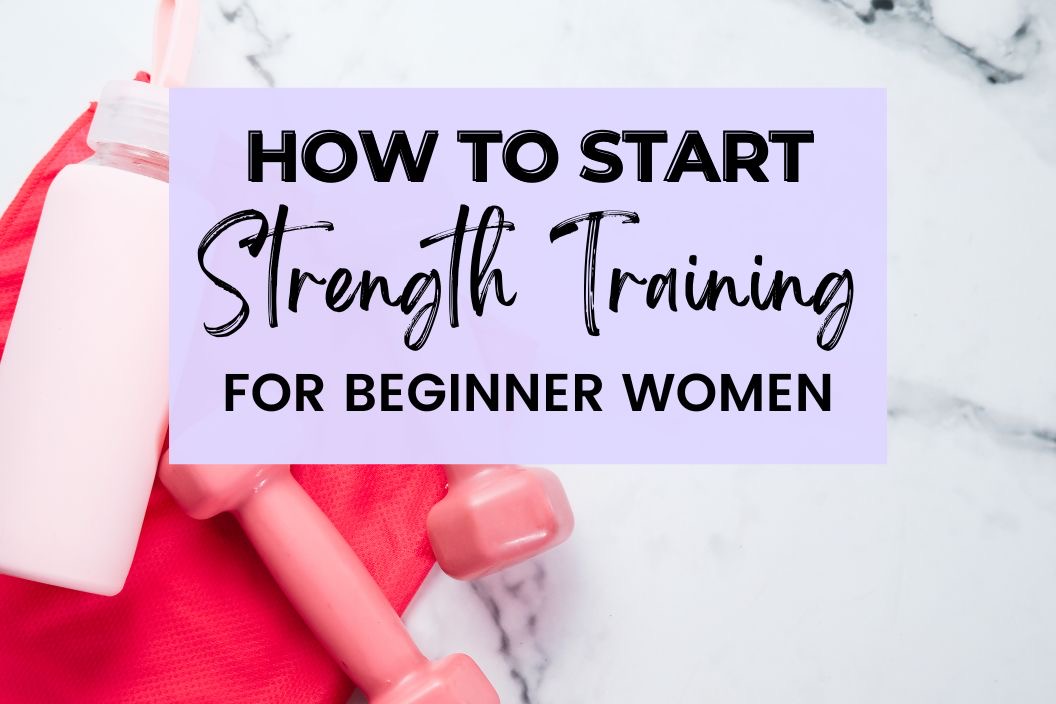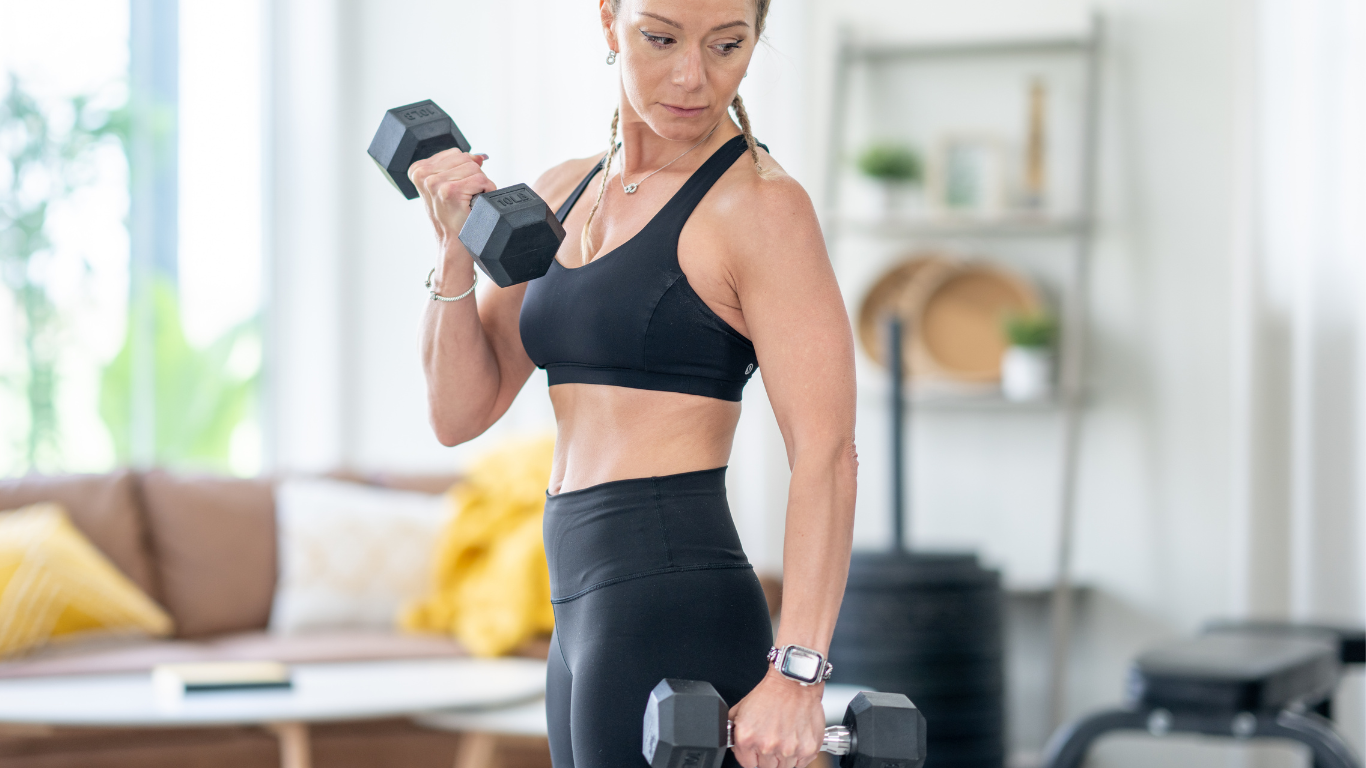
Why Strength Training is a Game-Changer for Women Aging
If you’ve ever stepped into a weight room and felt overwhelmed by all the heavy things or unsure where to start, you’re not alone. Many people hesitate to begin weight lifting because they worry about injury, not knowing proper form, or simply feeling out of place among younger gym-goers.
But here’s the truth: strength training is one of the best ways to stay healthy, strong, and independent as you age. It’s not just about building muscle strength—it’s about bone health, heart health, and overall health.
For women aging, starting a workout plan that includes resistance training can help:
✔️ Increase bone density and reduce bone loss
✔️ Prevent muscle loss and improve muscle tone
✔️ Support weight management and body composition
✔️ Lower the risk of heart disease, high blood pressure, and cardiovascular disease
✔️ Reduce stress and improve mental health
And the best part?
You don’t need to lift heavy dumbbells or spend hours in the weight room to see results. Even light weights, bodyweight exercises, resistance bands, and free weights can help you build lean muscle mass and improve your fitness goals over time.
Why Strength Training is Essential for Women Over 35
Many women fear that lifting weights will make them look bulky, but that’s a big myth. In reality, resistance training is a great way to burn body fat, sculpt lean muscle mass, and boost your metabolic rate—all without developing “bulky muscles.”

How Strength Training Supports Women’s Health
💪 Stronger Bones: As we age, bone loss becomes a real concern—especially for women. Strength training helps maintain bone density, reducing the risk of osteoporosis and fractures.
🔥 Hormonal Balance: When estrogen levels drop, muscle breakdown speeds up. But strength training helps preserve muscle mass, keeping you strong and energized.
⚡ Boosted Metabolism & Weight Loss: Ever heard that your metabolism slows down with age? Well, that’s not the whole story. The real issue is muscle loss, which can lower your calorie burn. Strength training keeps your metabolism revved up, meaning you burn more calories—even when you’re not working out. And guess what? More muscle = easier weight management!
🏋️♀️ A Smarter Way to Lose Weight: Forget endless cardio—strength training is one of the most effective ways to lose fat while keeping lean muscle mass. It shapes your body, improves body composition, and helps you feel strong and confident.
If you’re new to strength training exercises, don’t worry! There are plenty of beginner-friendly ways to get started without risking injury prevention or feeling overwhelmed.
How to Start Strength Training Without Injury (A Beginner’s Guide)
If it’s your first time lifting weights, the most important thing is to start slow and focus on proper technique. Here’s a step-by-step guide to help you build strength safely and confidently.
Step 1: Choose the Right Equipment
Not sure where to start? These beginner-friendly options will set you up for success:
✔️ Bodyweight exercises – Great for learning proper form before adding weights
✔️ Resistance bands – Easy on the joints and perfect for gradual progression
✔️ Light weights – Start with 2-5 kg and increase as you get stronger
✔️ Free weights – Dumbbells, kettlebells, or medicine balls for versatile workouts
✔️ Machines – Provide extra stability, especially great for older adults
Step 2: Learn Proper Form and Technique
Before lifting, mastering good form is key to injury prevention and muscle activation.
📌 Work with a certified personal trainer for guidance
📌 Watch instructional videos to learn correct movement patterns
📌 Prioritize good form over lifting heavy things—proper technique always comes first
📌 If you have past injuries, consult a physical therapist for modifications
Step 3: Try This Beginner Workout Routine
Strength training doesn’t have to take much time—30-40 minutes, 3 times a week is a great start. But if you're a true beginner, why not just start with ONE DAY? Give this quick routine a try right now and see how you feel!
💪 Full-Body Beginner Strength Training Routine
🔥 Warm-Up (5-10 minutes of aerobic activity)
✔️ Light jogging or brisk walking around the house
✔️ Arm circles and leg swings
✔️ Bodyweight squats or lunges
🔥 Strength Training (3 sets of 10-12 reps each)
✅ Squats (own body weight or light weights) – Strengthens lower body and bone density
✅ Bent-over rows (resistance bands or dumbbells) – Works upper body and different muscle groups
✅ Bench press (free weights or machine) – Builds muscle strength
✅ Glute bridges – Supports joint health and core stability
✅ Planks (30-60 sec/each) – Improves body composition and posture
🔥 Cool Down (5 minutes)
✔️ Stretching for flexibility
✔️ Deep breathing exercises to relax the body
No pressure, just progress! Start small, stay consistent, and watch yourself get stronger every day! 💪✨
Ready to Keep Going?
If you’re feeling good after this, why not take the next step?
💥 Get our FREE 4-Week Dumbbell Workout Plan! – Designed for home workouts with just dumbbells!
💪 Want more structure? Check out our 12-Week Easy Beginner Dumbbell Plan! – Learn how to balance workouts and eating while building strength!
How to Progress Without Injury
Once you’ve built a foundation, it’s time to level up your workouts while focusing on injury prevention.
1. Increase Weight Gradually (Progressive Overload)
- When the lighter weights feel easy, increase to heavier weights.
- Add more repetitions of each exercise or switch to compound exercises that work multiple muscle groups.
2. Listen to Your Body
- If you feel pain, stop immediately—worst case scenario, you get injured and have to take a break.
- Take recovery time seriously—your muscles need time to rebuild.
- Proper nutrition (including protein) helps repair muscle tissue after workouts.
Common Myths About Strength Training After 35 (And the Truth!)
🚫 Myth: “Strength training is only for young people.”
✅ Reality: Strength training is beneficial at any age, and it’s especially important for older adults to maintain muscle strength, bone density, and overall health.
🚫 Myth: “Lifting weights will make me bulky.”
✅ Reality: Women don’t have the testosterone levels needed to build extreme muscle mass. Instead, strength training helps you develop lean muscle mass, which supports weight management and a toned look.
🚫 Myth: “You need a gym membership.”
✅ Reality: You can get a great workout at home using bodyweight exercises, resistance bands, or dumbbells—no fancy equipment needed! Click here for a 30-minute at-home workout plan.
🚫 Myth: “Strength training is bad for your joints.”
✅ Reality: When done with proper form and technique, strength training actually supports joint health, reduces pain, and improves mobility—especially for those with arthritis or previous injuries.
The bottom line? Strength training is for everyone, and it’s never too late to start! 💪✨
Final Thoughts: Strength Training Is the Best Way to Stay Strong After 35
If you’ve been hesitant to start weight lifting, now is the perfect time. And no, it’s not just about losing weight or looking good (though that’s a great bonus!). The bigger picture? Strength training helps you build strong muscles, improve cardiovascular health, and prevent chronic diseases—so you can stay active and independent for years to come.
What’s the First Step?
✔️ Choose a workout plan that fits your lifestyle. We know you're busy, which is why we love at-home workouts—saving you time, energy, and money! Check out our easy-to-follow plan here.
✔️ Start with lighter weights and progress gradually. No need to invest in fancy equipment. A pair of dumbbells or even household items can be a great starting point!
✔️ Prioritize proper form and injury prevention. Light weights are a great way to build lean muscle and avoid injury, so don’t stress about lifting too little. Good form > heavy weights.
✔️ Stay consistent with regular strength training. Life happens, and you won’t always get in every workout—but that doesn’t mean you’re starting over. Miss a day? Just pick up where you left off!
Whether you join a group fitness class, work with a fitness expert, or follow an online exercise program, the key is to start. Even lifting a heavy dumbbell once a week is better than doing nothing at all.
And remember—it’s never too late to get stronger, feel healthier, and live your best life. 💪✨



